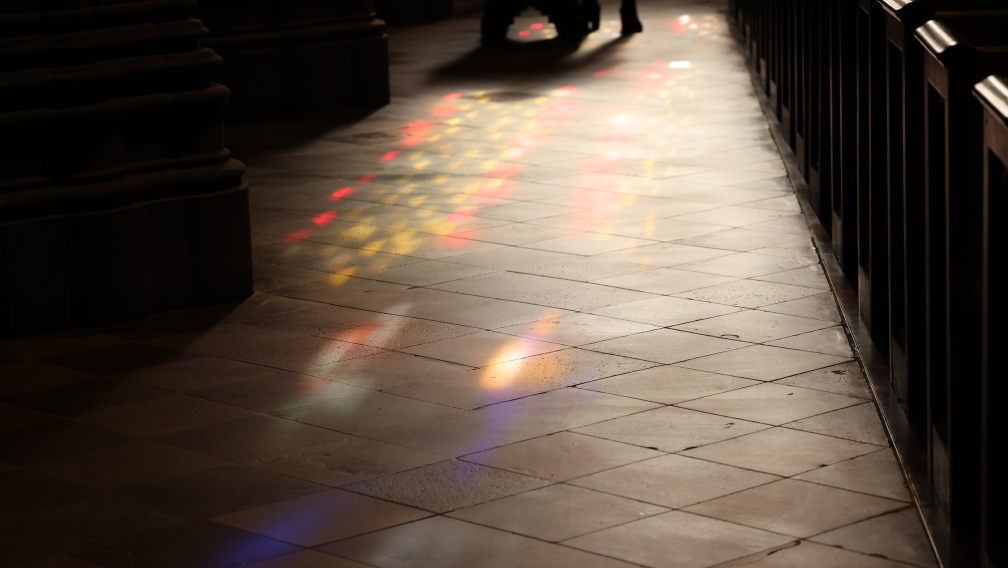“Jesus said to her, ‘Woman, why are you weeping? Whom are you looking for?’ Supposing him to be the gardener, she said to him, ‘Sir, if you have carried him away, tell me where you have laid him . . .’ Jesus said to her, ‘Mary!’ She turned and said to him in Hebrew, ‘Rabbouni!’ (which means Teacher).” — John 20:15–16
A Look Ahead to Sunday’s Readings
Who is first to meet the risen Christ at Easter, the first to proclaim that Jesus was resurrected?
You might guess it is one of Jesus’s disciples — one of the men. And that would be a good guess, given the cultural mores of the ancient Near East. But the Gospel writer is clear, and scholars agree: It is Mary Magdalene. This woman who’d traveled with Jesus, and out of her resources supported his ministry, is the first to discover and share the good news of Jesus’s resurrection with the world.
It is not surprising that Mary, with eyes swollen from weeping, doesn’t recognize Jesus right away. She’s standing outside his tomb. Two days before she’d witnessed his execution. But when he calls to her — when he speaks her name — she recognizes the sound of his voice immediately. Mary knows the teacher’s voice as intimately as she knows her own. She’d served beside Jesus; and along the way he had healed her and made her whole.
In the moment Jesus calls to her, Mary comes to herself. In seeing the risen Christ, she remembers herself — as loved, called, and forgiven. When Mary turns in Jesus’s direction, there is complete and mutual recognition: Mary sees Jesus, and Jesus sees Mary.
The Rev. Heather K. Sisk teaches that in scripture Mary Magdalene symbolizes the interior life. Mary models the spiritual journey by practicing the faithful attentiveness that leads to sacred seeing. In cultivating a deeper awareness of the divine, she models a unity of heart and head that’s necessary for prophetic witness — that is, proclaiming God’s life-breathing love through our lives. It’s only by encountering that love on our own, with our hearts, souls, minds, and bodies, that we can share what we’ve seen with the world.
It may take her a minute, but in the garden that morning Mary Magdalene sees Jesus. Through sight, sound, and an inner knowing, she discerns the holy in her midst.
Soon after, others among Jesus’s disciples have their own intimate experiences with the risen Christ, reaffirming Mary’s courageous proclamation that Jesus is God incarnate — arisen from the dead!
This Easter, let us open our hearts to see God in our midst:
Give us a resurrection faith, we pray, rooted in the truth
that You are with us, here and now.
Give us the grace to discern the sound of Your voice
and to follow in joyful confidence.
Read all of Sunday’s scriptures.
Here are five ways to meditate on the hope of Easter:
Music The great gospel singer Mahalia Jackson sings of the powerful encounter between Mary and Jesus in the garden — and speaks to God’s abiding love in our everyday lives.
Poetry In “Easter Poem,” writer Joyce Rupp describes the “hope-filled place” inside each of us that, like flowers in the spring, knows when to rise:
My heart stirs like dormant tulips
and hope comes dancing forth.
And Benedictine monastic Macrina Wiederkehr invites us to embrace the wild freedom of Easter:
Easter’s standing at your door again,
so don’t you see that stone has got to go?
that stone of fear . . .
and all the other stones we use
to keep Jesus in the tomb.
Dance If this doesn’t bring you to your feet rejoicing, nothing will: Bhangra artist Gurdeep Pandher dances for joy. May we experience divine love in and through our bodies.
Sculpture The Rev. Heather K. Sisk depicts Mary Magdalene and the gentle healing that comes through intimate relationship with Jesus.
Theology With Easter comes talk of hope — but what is hope, anyway? In Tomorrow’s Child, liberation theologian Rubem Alves suggests hope is “the hunch that the overwhelming brutality of facts that oppress and repress us is not the last word. It is the suspicion that reality is more complex than the realists want us to believe.”
Subscribe for Trinity Updates
Get information about Trinity Church Wall Street and our latest programming.
